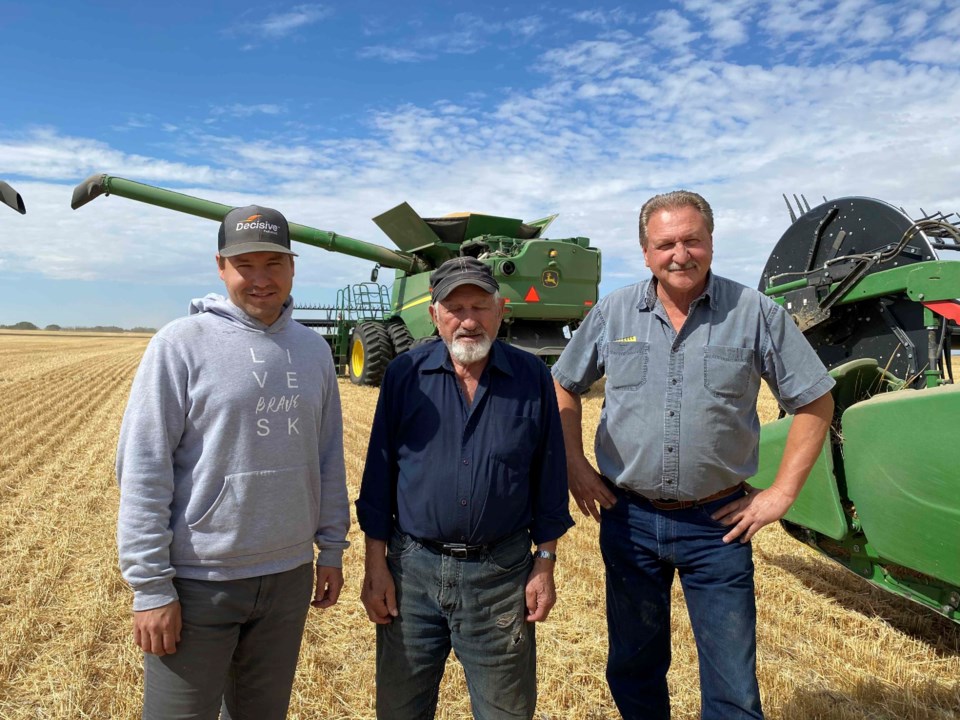MIDALE - Randy Johner with Johner Farms says it’s been a challenging year for the operation, but they’re still pleased with what they’ll be able to harvest.
Johner Farms, which is located near Midale, started work on harvesting peas a couple of weeks ago. While the yields weren’t strong, they were easy to combine because it’s been so dry.
“Then we had to wait a week, and now we’re into the durum,” said Johner. “The yields aren’t great, because we didn’t get as much rain up here as Estevan received, but combining went very easy.”
It’s been hot and dry for most of the summer.
The quality is going to be strong due to the lack of rain. The peas will rate No. 2 and the durum will be about the same.
“I think the cereals like the wheat and durum, those crops fare better in dry weather and hot weather. Durum’s kind of a desert crop, so it likes it hot and dry. It needs moisture, too, but it fares better than canola, which likes it to be a little cooler,” said Johner.
One redeeming quality is that prices are high this year. While they have smaller yields, the prices will help them survive.
Johner isn’t alone in terms of struggles for producers in the Midale and Macoun areas. But he’s quick to note that the drought extends to most of Western Canada and the Western U.S.
“Alberta and Manitoba are drier than they’ve been in a long time, and southwest Saskatchewan is very dry with very poor yields,” said Johner.
It’s a big area that this drought is affecting, so they feel fortunate to at least have a small crop, because a lot of places have very little to harvest.
For those who do have a good crop, they’ll benefit from good yields and good prices.
Once they’re finished with durum, the Johners will move into canola. They seeded canary seed last.
At the rate they’re going, Johner expects they will be finished harvest by the second week of September, which is about a month earlier than normal.
A couple more rains would have helped, but Johner said they don’t have any control over the weather.
“We hope that we get lots of rain this fall, so that we’re not dry again next year. The ground can absorb a lot of rain right now, because it’s been dry for a long time. Cracks in the ground are pretty big.”


